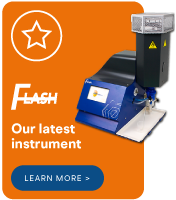
Analysis in chemistry often boils down to two key methods – Qualitative and Quantitative.
Both have their pros, cons and different uses depending on the type of analysis required and how it will be applied. But what is the difference between the two?
What is Qualitative analysis?
Qualitative analysis comes down to a simple “Yes or no” answer. The test for hydrogen known as the ‘pop test’ is a good example, and one common in school classrooms.
By holding a lit flame over the tip of a test tube, a small ‘pop’ would be heard if hydrogen is present, because it has combusted with oxygen present to form water. Either Hydrogen is present and a ‘pop’ is heard, or it is not present and no combustion occurs.

It specifically looks at the physical qualities of the sample to give an answer.
Other examples of Qualitative analysis testing:
· Bromine test to identify double or triple bonds in a hydrocarbon chain.
· Solid Sodium to test for alcohol functional groups.
· Litmus paper tests for pH.

What is quantitative analysis?
Quantitative analysis specifically looks at the quantity of something in something else.
Given we specialise in flame photometers, it seems only appropriate to give an example using one of our instruments.
The Photometer is specifically designed to give you a reading of the quantity of different ions (Na, K, Ba, Li and Ca) in an aqueous solution.
The entire process of photometry came from a metallurgist investigating the colour of a flame to see what metals were present in the ore, which resulted in chemists identifying that different elements gave off different coloured flames (for example Lithium giving off a classical brick red flame).

This is common in history, where a qualitative analysis starts the trail of knowledge from a qualitative analysis all the way down to a modern-day quantitative analysis of a material, which is then further and further improved upon to give more precise and accurate results.
More examples of Quantitative analysis testing:
· Gas and liquid Chromatography with a Mass Spectroscopy analyzer.
· A Flame Photometer.
· Titrations.
· Bomb calorimeter.
· Fourier Transform Infrared Spectrometry.
You can read more on the history of the flame photometer in these blog posts:



